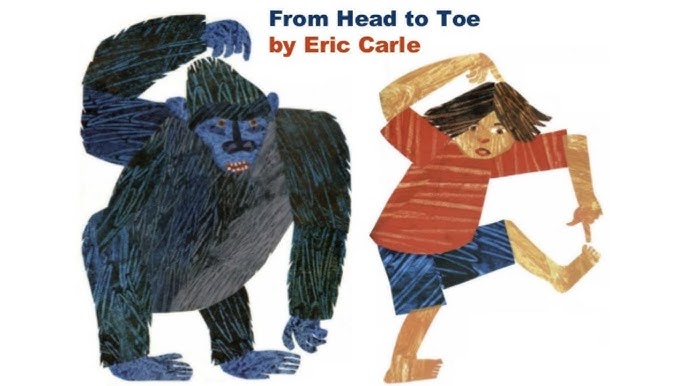Serve and Return: The Power of Back-and-Forth Interactions
- Tamara Gonzalez-Scheulov
- May 5
- 5 min read
Updated: 6 days ago

Before children use words, they learn that communication is a two-way street. This starts with something simple: taking turns. Whether it’s exchanging smiles, copying sounds, or playing peek-a-boo, these back-and-forth interactions lay the foundation for conversation and connection.
Serve and Return

Serve and return is a term used to describe the natural back-and-forth of early communication.
Just like a game of catch, your child “serves” with a look, sound, gesture, or action. You “return” by responding (i.e., smiling, commenting, imitating, or acting).
These moments are critical for brain development, social-emotional growth, and early language learning. According to the Harvard Center on the Developing Child, serve-and-return interaction helps build the brain’s architecture during the most rapid period of growth - ages 0 to 3.
Ways to Foster Back-and-Forth Interaction at Home
Many of the most powerful opportunities for back and forth communication happen naturally during play, daily routines, and shared moments. Below are simple ideas you can use throughout the day.
Everyday Routines That Build Back-and-Forth
Everyday routines are full of opportunities to connect. Moments like getting dressed, sharing a meal, or tidying up can become playful, back-and-forth exchanges that support early language, social skills, and connection.
The examples below are just a few possibilities. Any moment that involves turn-taking, shared attention, and responsive interaction can help build your child’s communication skills.

Dressing:
Pause and let your child “help” by lifting arms, putting on shoes, or anticipating what comes next.
Mealtime:
Take turns labeling foods, clinking cups, or pretending to “cheers.” Wait for a look or sound before offering a bite.
Diapering or Bath Time:
Sing a familiar song or play peek-a-boo with a towel. Narrate what you’re doing and pause to let your child respond.
Cleaning Up:
Make a game of passing toys into a bin - "Your turn... my turn!" or saying "bye, bye" to the toys. Celebrate each exchange.
Play-Based Ideas
Peek-a-Boo

With hands: Cover your eyes with your hands and say, “Where’s Mommy? … Peek-a-boo!” Wait to see if your child laughs, looks, or imitates.
With a blanket: Hide behind a small blanket or scarf and say, “Where's Mommy?" or "Mama where are you?... Peek a Boo!” You can also hide your child under the blanket and “find” them.
Behind a pillow or couch: Pop up and down saying,
“I see you!” or “There you are!”
With a favorite toy: Hide a stuffed animal and bring it out again:
“Where’s bear? Bear where are you? … I see you! There you are!"
Why it matters
Each round of peek-a-boo follows a predictable pattern: action, then pause, then response, then surprise. When you pause before revealing your face or toy, your child learns to anticipate and “take their turn”, even with a look, a smile, or a squeal. Over time, they may start to initiate the game themselves, lifting the blanket or hiding their own face, which is a big step in early interaction!

Row, Row, Row Your Boat
Classic
Sit face-to-face and hold hands. Gently rock back and forth as you sing “Row, row, row your boat…” Pause before a key word: “Row, row, row your…” (pause).
Watch to see if your child makes a sound, looks at you, or leans forward to continue the game.
Add Variation
Try different versions of the song for extra fun and engagement:
“Row, row, row your boat, gently down the stream…If you see a lion, don’t forget to ROAR!” ; “If you see a crocodile, don’t forget to scream! Aaaah!”
Ball Rolling or Object Exchange

Sit on the floor face-to-face with your child, close enough to easily pass or roll objects back and forth. Maintaining eye contact and staying at your child’s level helps keep them engaged and focused on the interaction.
Try rolling a ball, sliding a toy car, or passing a block or shaker between you. As you play, use simple language to label the actions. Say things like “your turn,” “my turn,” “go,” or “stop.” These clear, repeated phrases help your child begin to understand the rhythm of turn-taking.
Mirror Play

Sit face-to-face or in front of a mirror and copy your child’s movements, facial expressions, or sounds. Then pause and give them a moment to respond or imitate you.
These back-and-forth moments build social imitation, a sense of timing, and shared attention, which are all critical foundations for language development.
Puppet or Stuffed Animal Play

Use a puppet or your child's favorite stuffy to say "hi" or make small talk. Remember to pause, giving your child time to respond. These exchanges become a form of conversation, even
before words emerge.
Example:
Serve: The puppet says, “Hi!”
Return: Wait. If your child looks or smiles, the puppet responds, “I see you! Do you want a hug?”
Serve: Your child hands the stuffed animal to you.
Return: You respond, “Thank you! Rabbit is sleepy... shhh.” Then pause and wait.
Serve: You pretend the puppet is eating.
Return: Pause, then ask, “What should we feed him next?” Wait for your child to point, make a sound, or hand you something.
Each turn doesn’t need to be verbal. Eye contact, gestures, smiles, and sounds all count. By slowing down, watching for your child’s “serve,” and responding with a simple, playful “return,” you’re helping them learn how conversations flow.
Songs That Encourage Turn-Taking

1. The Wheels on the Bus: Pause after "The wheels on the bus go ..." to see if your child fills in a sound, gesture, or action.

2. Old MacDonald Had a Farm: Wait for your child to choose or imitate the animal sounds.

3. Open, Shut Them: Use hand gestures and pause before “open shut them…” to build anticipation.

4. If You’re Happy and You Know It: Clap hands or stomp feet. Model first, then pause and watch for your child to respond.

5. Itsy Bitsy Spider: Great for combining hand motions and pauses in a predictable routine.
Picture Books That Support Turn-Taking
Look for interactive, repetitive, and/or lift-the-flap books that naturally invite participation. You don’t need to read the words verbatim. You can describe the pictures, make comments, or simply pause and wait.
Some great books to try:
Dear Zoo by Rod Campbell
Where’s Spot? by Eric Hill
Brown Bear, Brown Bear, What Do You See? by Bill Martin Jr. & Eric Carle
From Head to Toe by Eric Carle
Goodnight Gorilla by Peggy Rathmann
We're Going on A Bear Hunt by Michael Rosen
Five Little Monkeys by Eileen Christelow
Why It Matters
These back-and-forth exchanges lay the foundation for intentional communication.
Serve and return doesn’t need to be scripted or planned. What matters most is being present, responsive, and giving space for your child to take a turn, even if that “turn” is a look, a grin, or a tiny sound.
Additional Resources
Learn more about serve and return with this simple parent guide from the Harvard Center on the Developing Child.
References
Center on the Developing Child at Harvard University. (2021). Serve and return. https://developingchild.harvard.edu/science/key-concepts/serve-and-return/
Del Rosario, C., Hutman, T., Rozga, A., & Messinger, D. (2023). Parent-child interaction and developmental outcomes in children with typical and elevated likelihood of autism. Infant Behavior and Development, 71, 101830. https://doi.org/10.1016/j.infbeh.2023.101830
Komanchuk, J., Letourneau, N., Duffett-Leger, L., & Cameron, J. L. (2023). History of “serve and return” and a synthesis of the literature on its impacts on children’s health and development. Issues in Mental Health Nursing, 44(5), 406–417. https://doi.org/10.1080/01612840.2023.2192794
Hudson, S., Levickis, P., Down, K., Nicholls, R., & Wake, M. (2015). Maternal responsiveness predicts child language at ages 3 and 4 in a community‐based sample of slow‐to‐talk toddlers. International Journal of Language & Communication Disorders, 50(1), 136–142. https://doi.org/10.1111/1460-6984.12129
Recchia, S. L., Lee, S. Y., & Shin, M. (2015). Preparing early childhood professionals for relationship-based work with infants. Journal of Early Childhood Teacher Education, 36(2), 100–123. https://doi.org/10.1080/10901027.2015.1030523
Topping, K., Dekhinet, R., & Zeedyk, S. (2013). Parent–infant interaction and children’s language development. Educational Psychology, 33(4), 391–426. https://doi.org/10.1080/01443410.2012.744159
Weitzman, E., & Greenberg, J. (2002). Learning language and loving it: A guide to promoting children’s social, language and literacy development in early childhood settings (2nd ed.). The Hanen Centre.
Weitzman, E., & Pepper, J. (2004). It takes two to talk: A practical guide for parents of children with language delays (4th ed.). The Hanen Centre.

















